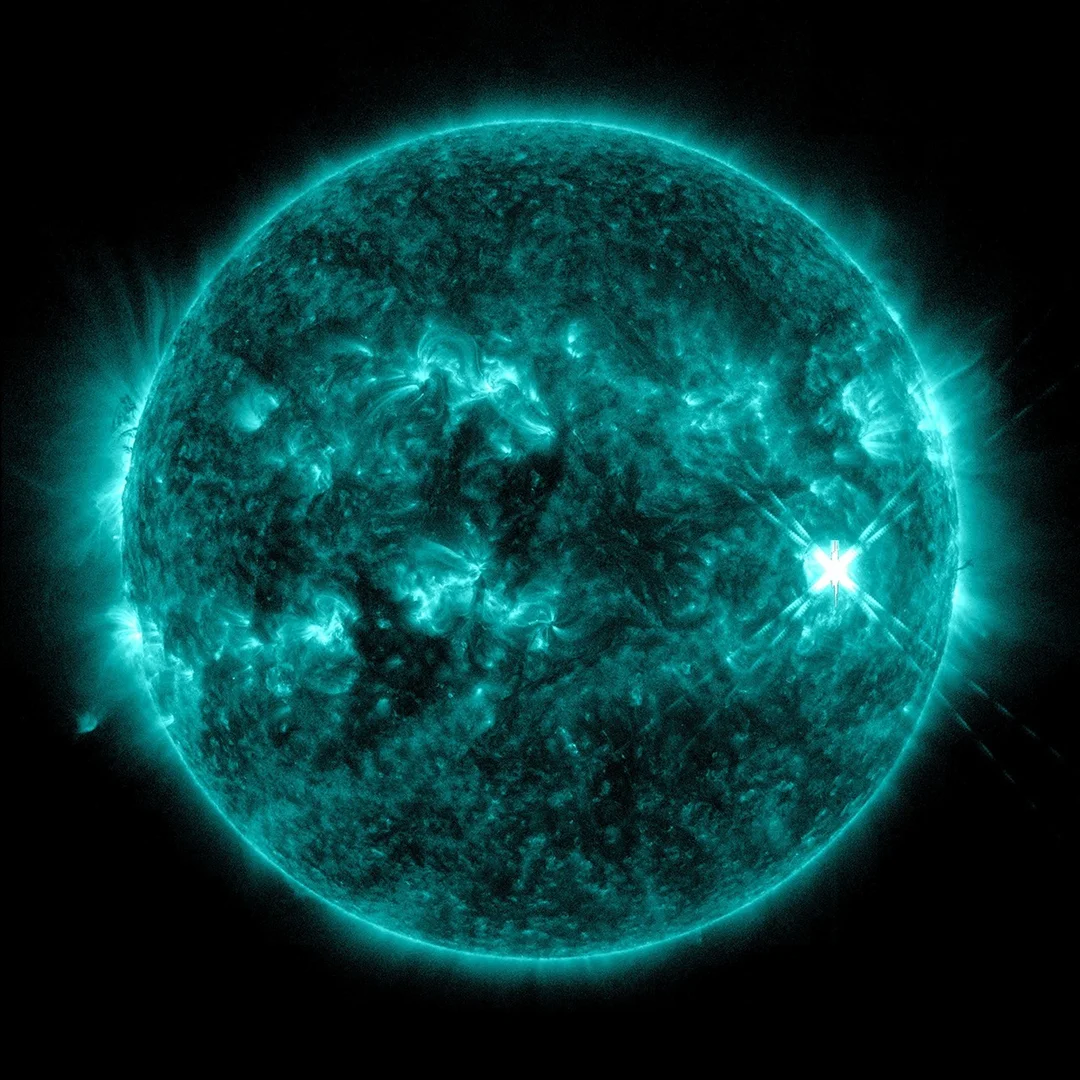
Severe Solar Storm Alert: Earth Braces for Potential Power Grid Disruptions and Auroral Displays
A severe solar storm is headed towards Earth, prompting warnings of potential disruptions to power grids, satellite operations, and communication systems. NASA and NOAA models are in rare agreement, predicting the arrival of a powerful coronal mass ejection (CME) on June 1, 2025. This event has sparked concerns about geomagnetic disturbances and potential technological impacts, but also raises the possibility of spectacular auroral displays visible far beyond the polar regions.
The source of this impending space weather event is sunspot 4100, which unleashed an M8.2-class solar flare on May 31. While just shy of X-class, the flare's sustained energy release propelled a massive CME towards Earth. This CME, traveling at an estimated 1,938 kilometers per second, is expected to trigger immediate geomagnetic disturbances upon impact.

According to the Space Weather Prediction Centre, the storm could lead to severe (G4-class) geomagnetic storm conditions. This raises the specter of potential power grid blackouts, satellite malfunctions, and GPS disruptions. Aviation and military high-frequency radio communications could also face interference. Submarine internet cables could experience temporary failures due to affected signal repeaters.
While the potential for disruption is real, experts emphasize that this event also presents valuable learning opportunities. NASA views solar flares and CMEs not just as threats, but as chances to refine prediction models and develop better protective measures for our technological infrastructure.

Beyond the technological concerns, the incoming solar storm promises a breathtaking celestial display. If the CME's magnetic field aligns favorably with Earth's magnetosphere, auroras could be visible at unusually low latitudes, potentially reaching as far south as Alabama and Northern California. This would offer a rare spectacle for skywatchers far removed from the usual polar regions.
Although this event is not expected to rival the intensity of the legendary May 2024 storm, it could still rank as one of the most powerful of the current solar cycle. Whether it's the threat of technological disruption or the promise of vibrant auroras, the approaching solar storm serves as a powerful reminder of the Sun's influence on our planet.
What are your thoughts on the potential impact of this solar storm? Are you prepared for potential disruptions, or are you more excited about the possibility of seeing the Northern Lights? Share your opinions and observations in the comments below!
Related issues news
Will a solar flare hit Earth in 2025?
Nasa and Noaa models agree that the explosion will strike our planet sometime on June 1.
When is the solar flare 2025?
A strong, long-duration solar flare registered as M8.1 erupted from Active Region 4100 at 00:05 UTC on May 31, 2025. The flare began at 23:31 UTC on May 30 and ended at 01:32 UTC on May 31.